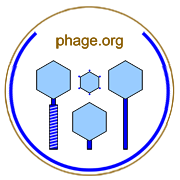

Chapter authored by J. J. Bull published in 2008.
Bull, J. J. 2008. Patterns in experimental adaptation, p. 217-247. In: S. T. Abedon (ed.), Bacteriophage Ecology. Cambridge University Press, Cambridge, UK. [Google Books]
Abstract: From the perspective of evolutionary studies, phages offer benefits of short generation times, small genomes, and ease of propagation. These advantages apply chiefly to the use of phages in laboratory experiments, however. Although some understanding of phage evolution in a natural environment can be inferred from genome sequences, we have precious little understanding of the natural environment of any phage and are even ignorant of what constitutes the population of a phage. So when phages are used as model systems of evolution, with tight controls on host strains, host density, media, temperature, and population sizes, it must be assumed that we are hoping to discover generalities that transcend the specific context of the lab environment. It certainly cannot be pretended that our systems create miniature replicas of what a phage experiences naturally, which would have too many uncontrolled variables to do science. In this chapter I explore phage evolutionary biology from the perspective of laboratory experimentation, considering in particular a statistical fitness perspective on phage evolution rather than the more common functional perspective as considered, for example, in Part I (Phage ecology) of this monograph. See Chapter 6 for a general introduction to many of the concepts presented here.
Contact web master. Return to terms.











